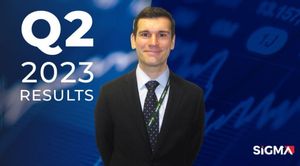Concerns are mounting across global markets as U.S.-China technological tensions escalate, highlighted sharply by President Donald Trump’s proposed tariff plans and investment restrictions. These developments have sparked uncertainty among investors, leading to market fluctuations and cautious investor behavior.
According to Bloomberg, Trump’s announcement of tariffs and stricter semiconductor investment laws has interactions with allies, especially Japan and the Netherlands, reinforcing fears about diminishing foreign investment, especially from China. These issues have caused stocks to struggle for direction, with 10-year Treasury yields dropping to their lowest levels seen over the past two months.
Rajeev De Mello, global macro portfolio manager at Gama Asset Management, stated, “The continued signaling of new tariffs introduces unnecessary volatility...”. This concern over tariffs is nothing new; the effect has been immediate, as investors have been seeking refuge from losses by shifting their focus to more stable assets like gold, now near its record highs.
Asian markets, particularly the Hang Seng index, experienced notable stress. Stocks across the board demonstrated vulnerability, with the index initially falling as much as 2.7%, pulled downward by significant losses incurred by technology giants such as Alibaba, which dropped nearly 8%. The index showed signs of recovery later on as investors entered the market seeking bargains after what has been termed as one of the fastest rallies this year.
Meanwhile, Trump's administration continues to push for restrictive measures on U.S. semiconductor exports to China. Recent reports indicate meetings held between U.S. officials and counterparts from Japan and the Netherlands aimed at curtailing access for Japanese firms, such as Tokyo Electron and ASML Holding, to provide maintenance for semiconductor machinery used by Chinese companies. The ripples of these meetings suggest intent to tighten regulations surrounding technology collaborations.
Numerous investors are alarmed by potential consequences of these tariffs and restrictions on global economic growth, as noted by financial analysts. The fear is palpable as sentiments swirl about the U.S. taking more aggressive stances against foreign investments, particularly as companies factoring significantly in the semiconductor field like Nvidia face scrutiny. A Bloomberg report indicated, “... the U.S. also is seeking to toughen restrictions on the export of semiconductor technology to China - particularly chips from artificial intelligence leader Nvidia...”.
Feeling the impact of this tech war, the Chinese markets have reacted to the ripple effects of U.S. policy shifts. According to reports, the Hang Seng Tech Index was whipsawed back and forth, reflecting the tensions and investor sentiment surrounding these newly imposed restrictions. A rebound was noted as traders searched for bargains, considering the steep declines earlier experienced.
Yet the underlying sentiment remains cautious as investors question the sustainability of massive spending on artificial intelligence and technology. This cautious outlook is evident as the market awaits the upcoming earnings reports from leaders like Nvidia, where analysts project exponential growth potential of 72% increase year-over-year. The predominance of uncertainty swirls through the markets as upcoming data on consumer confidence and production sectors loom on the horizon.
Gold, traditionally viewed as a safe-haven asset, has begun to see some upward momentum due to these conditions, with price points edging closer to the $3,000 mark as some investors hedge against volatility stemming from geopolitical tensions.
The broader picture suggests multitudes of challenges await multinational corporations and investors adapting to this changing environment. Trends of investment flows indicate marked concerns, as shrinking economic indicators lay down caution against prior beliefs of distinct market superiority within the U.S. economy. Such sentiments reflect notions of potential policy shifts as market participants brace for adjustments to all economic forecasts.
Still, the debate around the efficacy of these policies is gaining traction within financial circles, as stakeholders begin to wonder whether the cost of piecemeal regularization of tariffs and restrictions will culminate positively or negatively on global markets.
While the next chapter of the U.S.-China economic relationship remains uncertain, today’s market conditions reveal the stakes concerning international tech cooperation, overall global economic stability, and the investor sentiment wrangling with fears of market decoupling from mutual dependencies. Moving forward, all eyes will be on these developments as corporations and investors alike navigate this delicate yet tempestuous balance.



